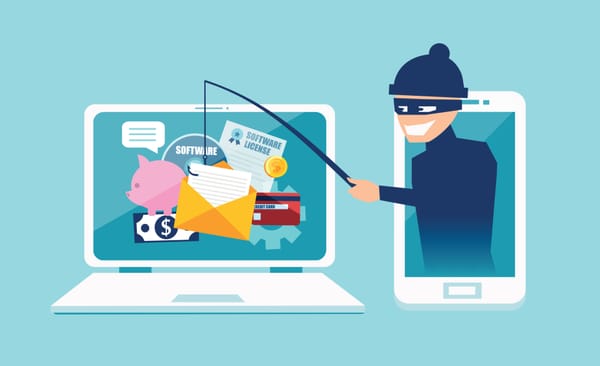Counter-Strike 2 Skins Scams Are Complex and Difficult to Spot; Here’s How to Stay Safe

Valve launched Counter-Strike 2 in 2023, and it was immediately targeted by criminals and scammers using the same tricks from previous iterations and other games with a thriving financial ecosystem. Fortunately, players can easily combat all scams and other dangers with a little bit of caution and the right security tools.
Counter-Strike 2 is a free-to-play game, meaning anyone with a Steam account can download and play it. So, is the publisher making any money? In fact, according to some estimates, Counter-Strike 2 netted Valve around $1 billion.
The answer is straightforward: Valve sells skin cases to players. Remember, these are only cosmetic items and do not affect gameplay. Furthermore, users can sell these items in the Steam Community Market, where Valve takes transaction fees. Since items can be sold and purchased endlessly, it’s easy to understand why scammers would try to enter this market.
Steam scams go way beyond established schemes
With so much money on the line, scammers work overtime to devise new ways to defraud players. There’s also a race between security measures implemented by Valve and new scams that constantly pop up.
These games, along with others developed by Valve, have spawned secondary markets and new trading platforms whose only focus is to attract players looking to sell and buy skins and those simply trying to make a profit.
In turn, fake copies of real trading platforms have also appeared everywhere, and fraudsters have even bought ad space in Google results. Just because a website appears during a search doesn’t mean it’s a safe website.
Phishing on steroids
For many regular online services, getting someone’s credentials is enough to compromise the account. Steam accounts have several security layers, including two-factor authentication and SMS security codes. Moreover, even if someone gets into your account and changes the password, for example, there’s a grace period of up to 15 days before they can perform transactions, but users often find new ways to shorten that up.
One of the most common phishing schemes consists of convincing people to log into a trading platform that might seem new or is a very good copy of an existing one. When victims are asked to log into their Steam account in a browser, they are actually offering the credentials to the hackers.

Since many users have the Steam authenticator enabled, bypassing it would be pretty tricky. However, the fake website also asks users to scan a QR code to log in, which is actually a method to log into Steam via SMS. Attackers use your SMS code to transfer the Steam Guard authenticator to another device.
If the user is not tech-savvy or careful, the scammers quickly transfer the items to another account once the cooldown expires.
Since many of these skins can be priced between tens of dollars and tens of thousands of dollars, criminals will never stop finding new ways to trick people.
If you notice the email and messages from Valve that the Steam Guard has been moved, the first move would be to deauthorize all devices from the account and change the password immediately.
Of course, it would also be advisable to install a robust security solution, such as Bitdefender Ultimate Security, that can prevent users from interacting with the phishing site in the first place.
Beware of users sending links
In some cases, scammers directly contact people via Steam, trying to convince potential victims to click on a link and open dangerous websites. They might also extend trade offers that can be manipulated in multiple ways, including with bots designed for this specific reason.
The best course of action is not to follow links from unknown users, never share credentials, and don’t confirm Steam Trades in the authenticator until you carefully check them.
Social engineering is just as dangerous
Some scammers use much simpler methods to get your precious Counter-Strike 2 items, like social engineering. They might try to convince you to pay something with real money or promise to send you money through a bank account or an app.
Even simpler than that, a scammer convinces you to make a trade, and all you have to do is hit ok on the Steam Guard. But the scammer makes a change at the last minute, substituting his item with something very cheap. The fraudster relies that you won’t make a last check before approving.
Finally, one method still around is for scammers to pretend they represent Valve. They might even warn you that your account has been compromised and that you need to access a link to make changes for your safety. Remember that Valve is not proactively contacting any user, no matter the security issue. It’s the other way around, as players have to contact Valve when they have issues.
How to stay safe
With a few very reasonable security measures, staying safe while trading and playing Counter-Strike 2 is not all that hard.
- Be very careful when a website requests your login credentials. No other website other than Steam should want your login credentials.
- Don’t open links from unknown users.
- Trading platforms that offer low prices for extremely valuable Counter-Strike 2 items should immediately become suspicious. Even if you open the link from a Google search, don’t trust it.
- Use Bitdefender Ultimate Security to ensure you don’t fall prey to phishing attempts. Some of the fake platforms can be virtually identical to the real ones, and users won’t be able to spot any differences.
- Don’t scan QR codes on any other website other than the official Steam platform.
Bitdefender Scamio to the rescue
Using AI can seriously up your defense, especially regarding scams or social engineering attacks. Scamio is FREE to use. Just upload any texts, messages, emails, images, and QR codes, and you will get a quick answer if it’s a scam or not.
Additionally, you can describe a suspicious situation, and Scamio will provide you with an instant assessment of whether you may get scammed. Scamio is available on Facebook Messenger, WhatsApp, and your web browser. You can also help others stay safe by sharing Scamio with them in France, Germany, Spain, Italy, Romania, Australia, and the UK.
tags
Author
Silviu is a seasoned writer who followed the technology world for almost two decades, covering topics ranging from software to hardware and everything in between.
View all postsRight now Top posts
Streamjacking Scams On YouTube Leverage CS2 Pro Player Championships to Defraud Gamers
February 20, 2025
How to Identify and Protect Yourself from Gaming Laptop Scams
February 11, 2025
Your Device ‘Fingerprint’ Will Go to Advertisers Starting February 2025
December 24, 2024
Beware of Scam Emails Seeking Donations for UNICEF or Other Humanitarian Groups
December 19, 2024
FOLLOW US ON SOCIAL MEDIA
You might also like
Bookmarks







